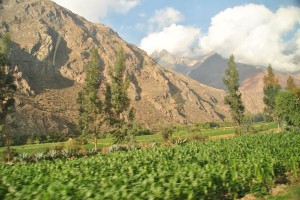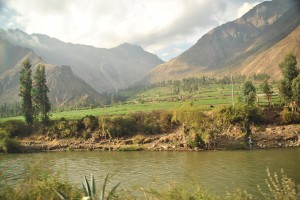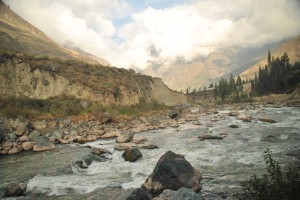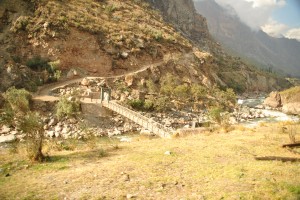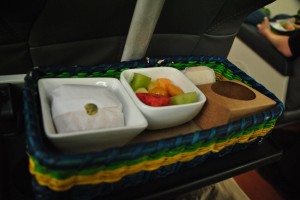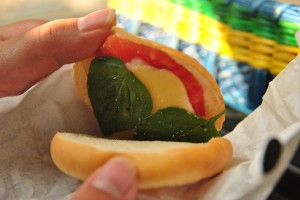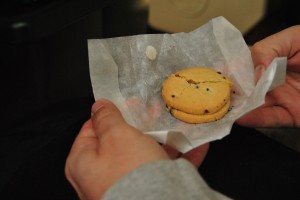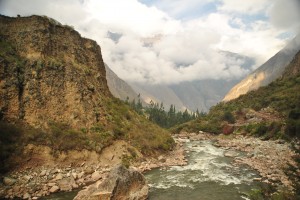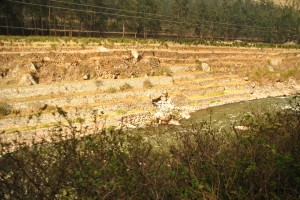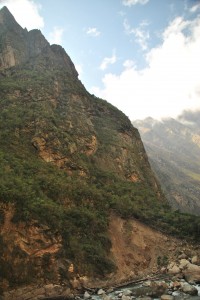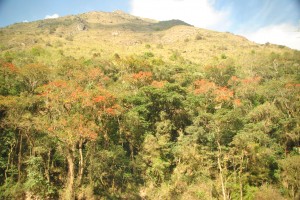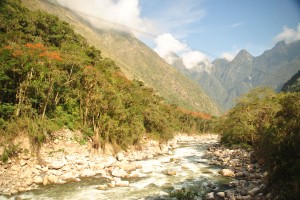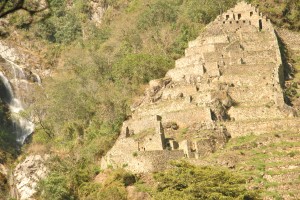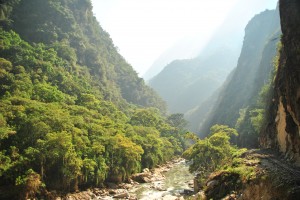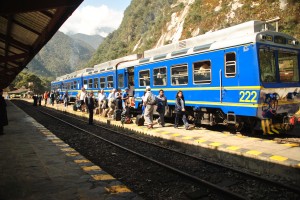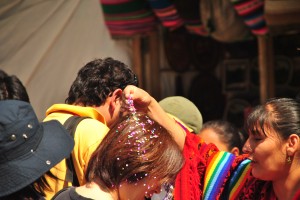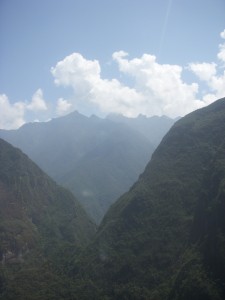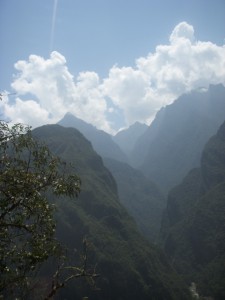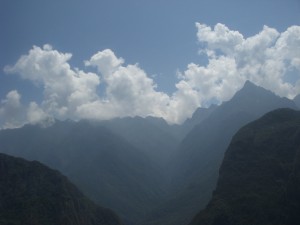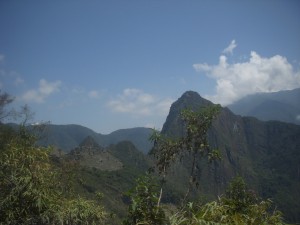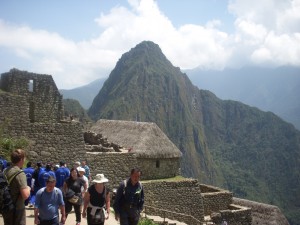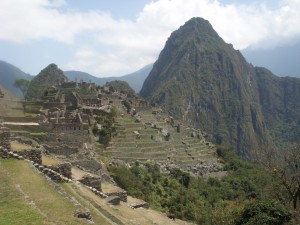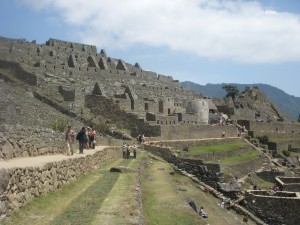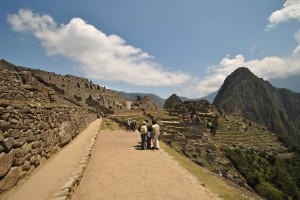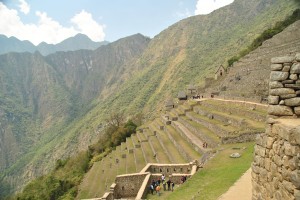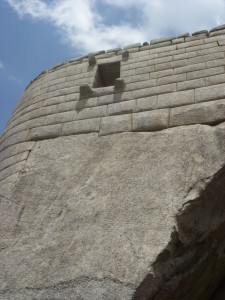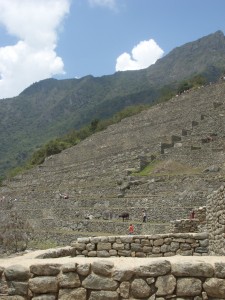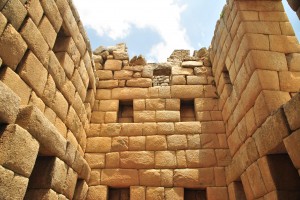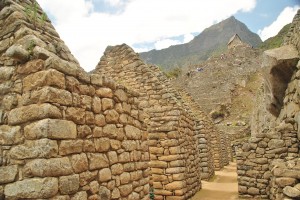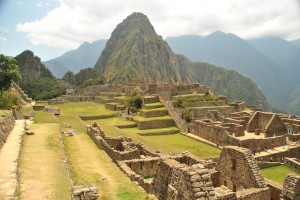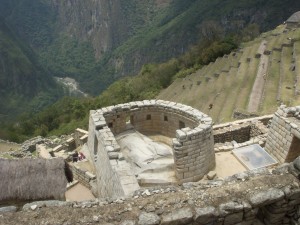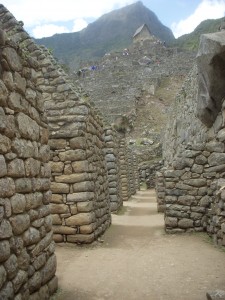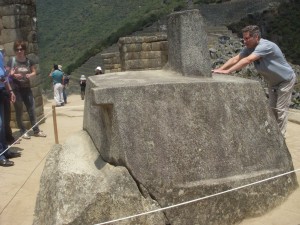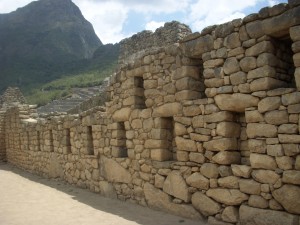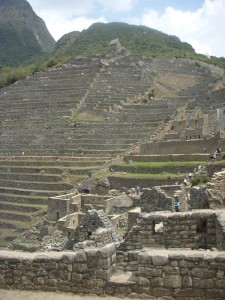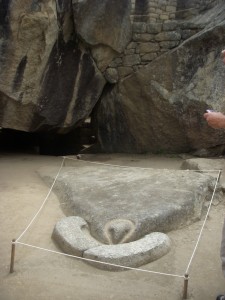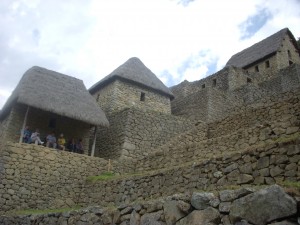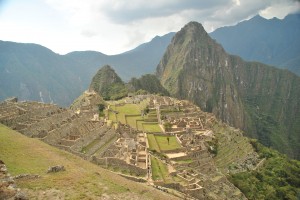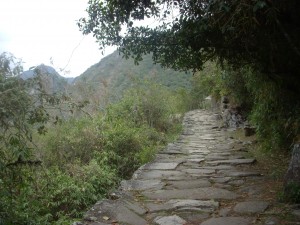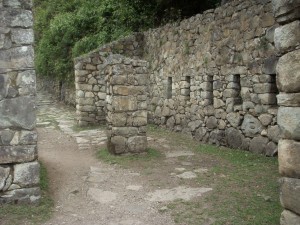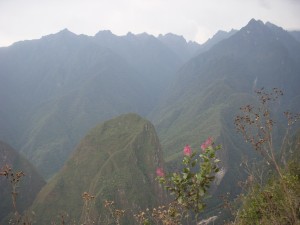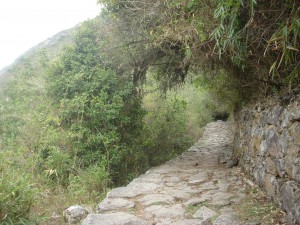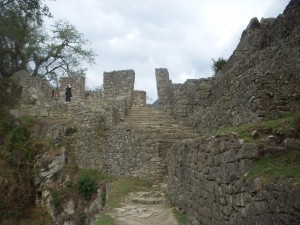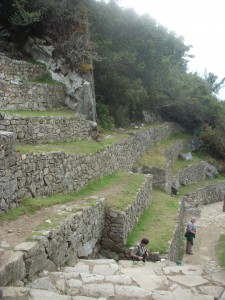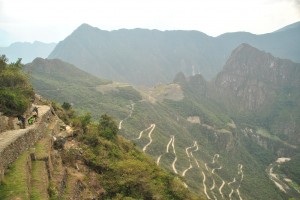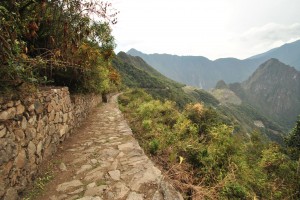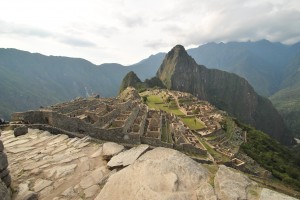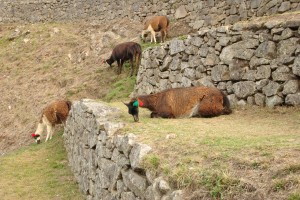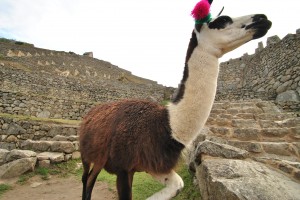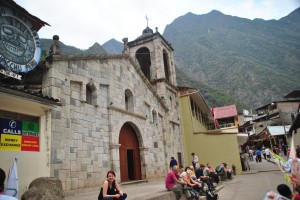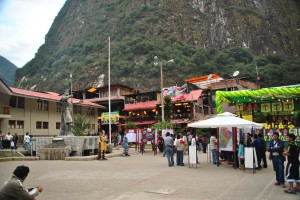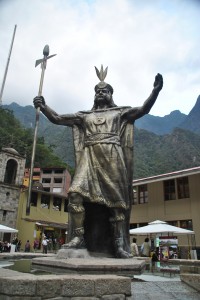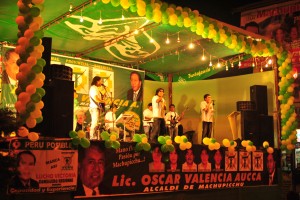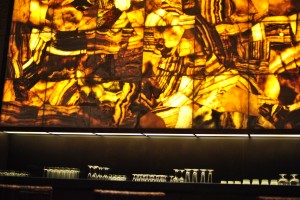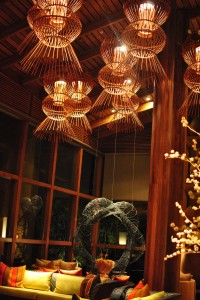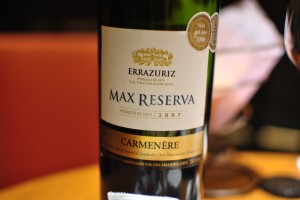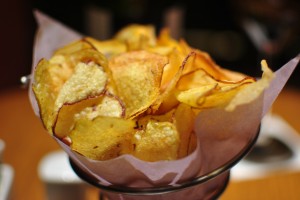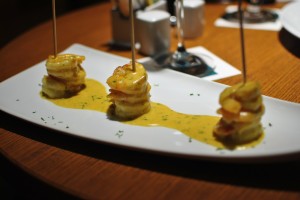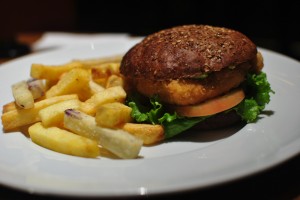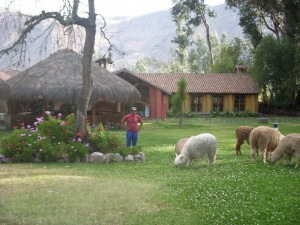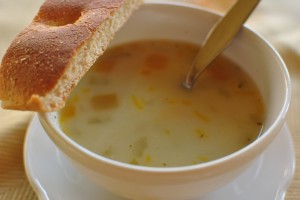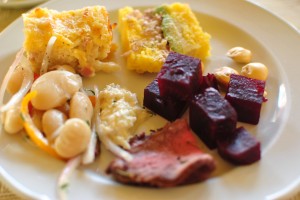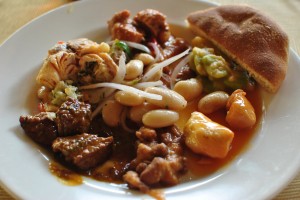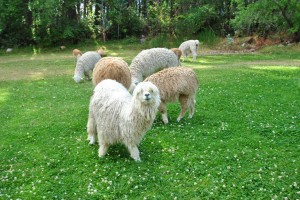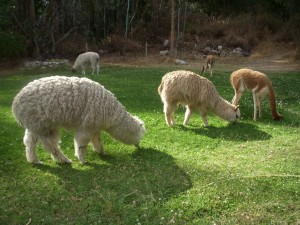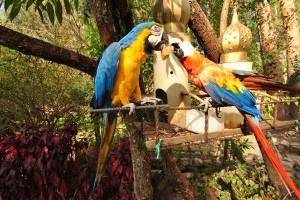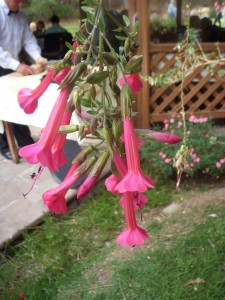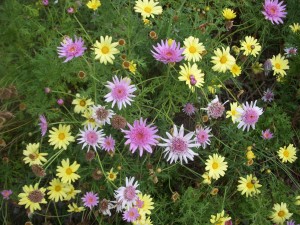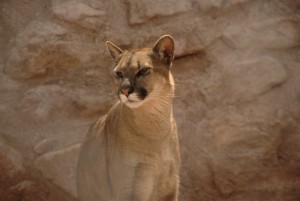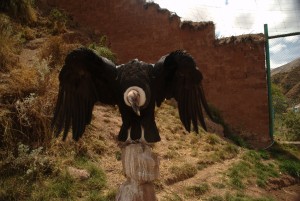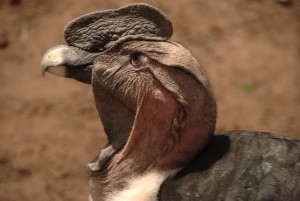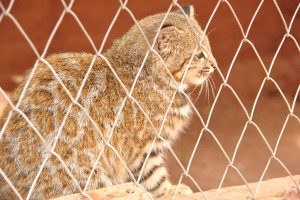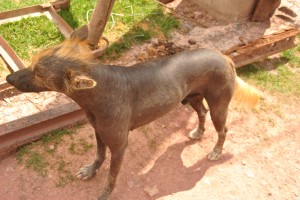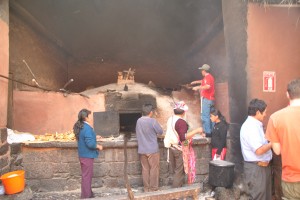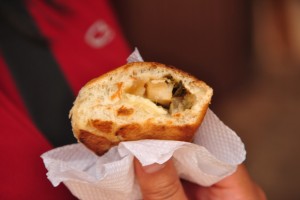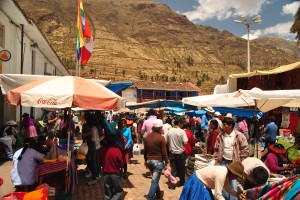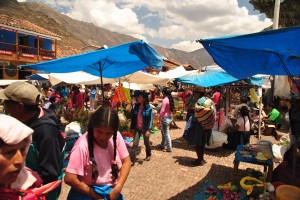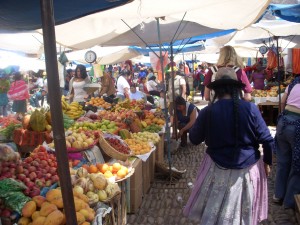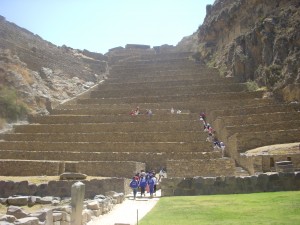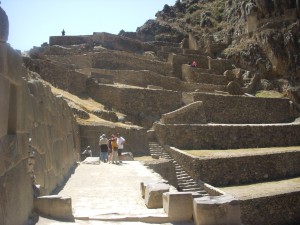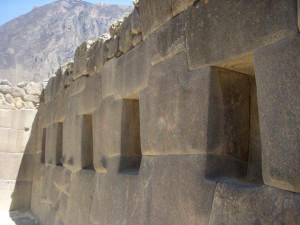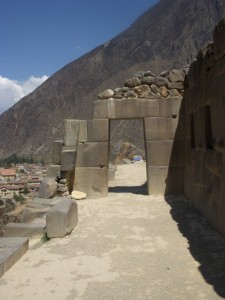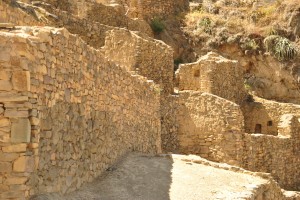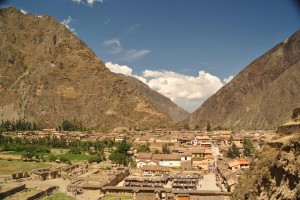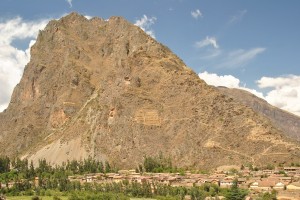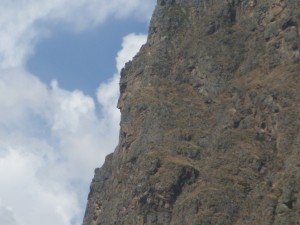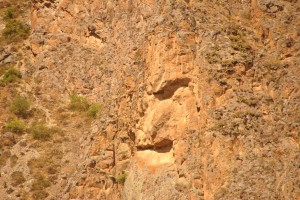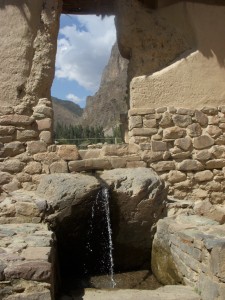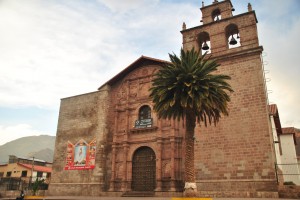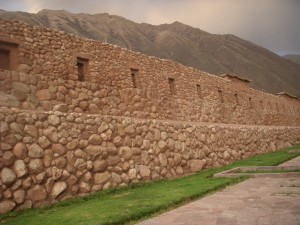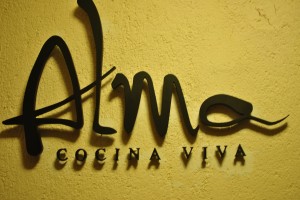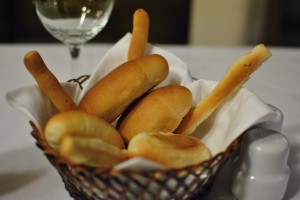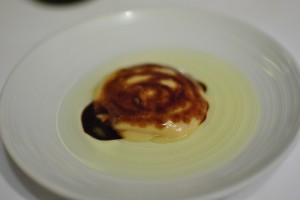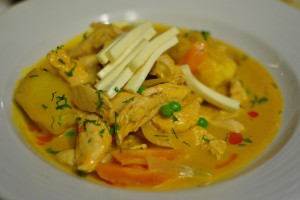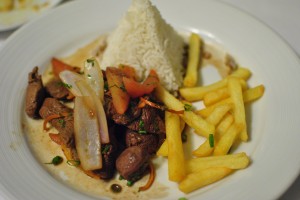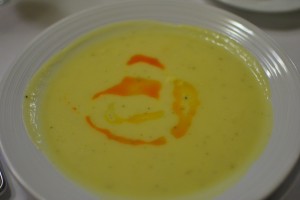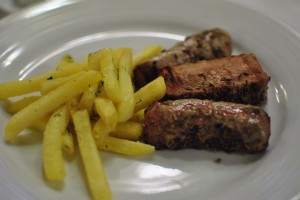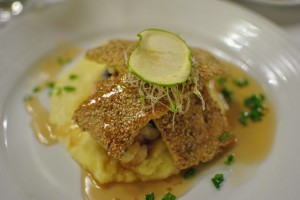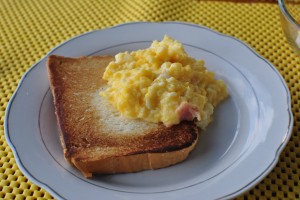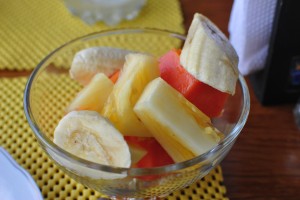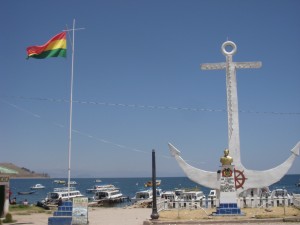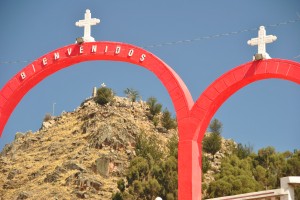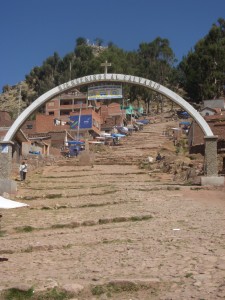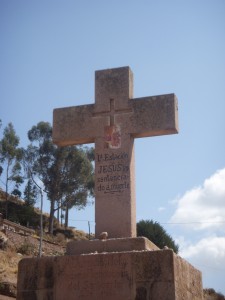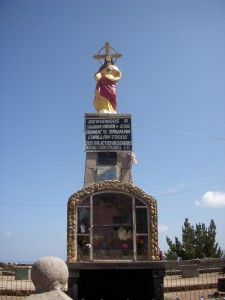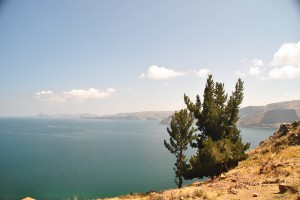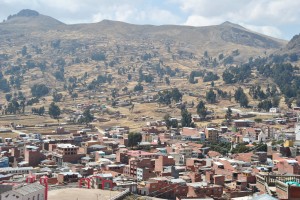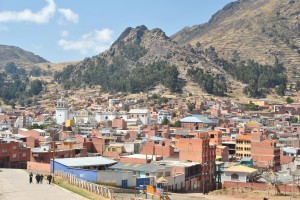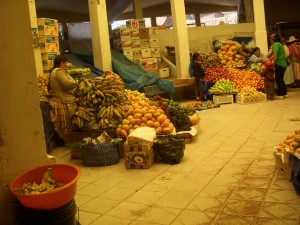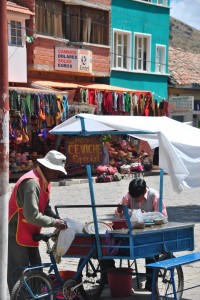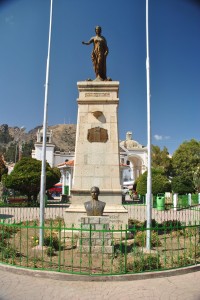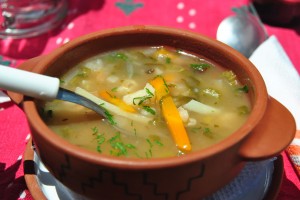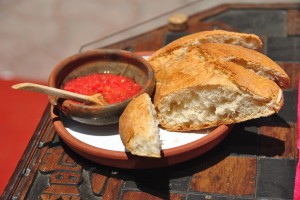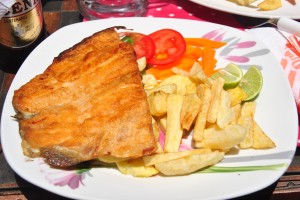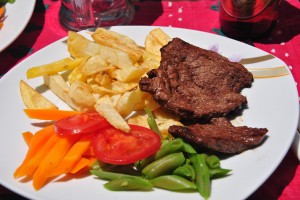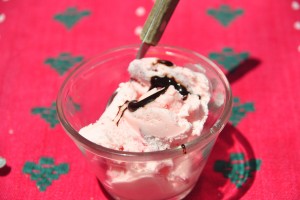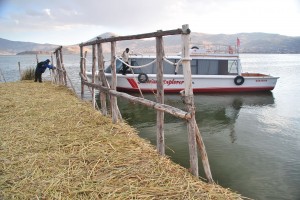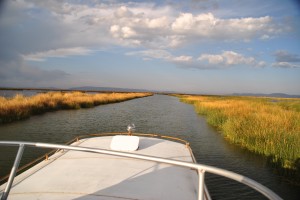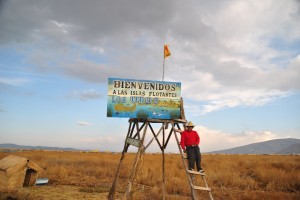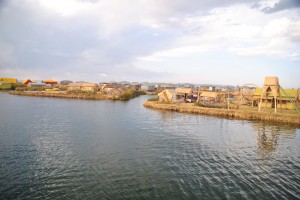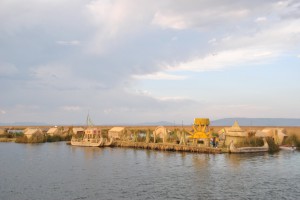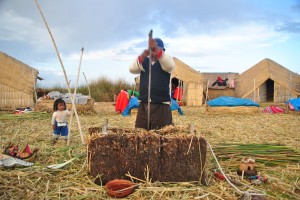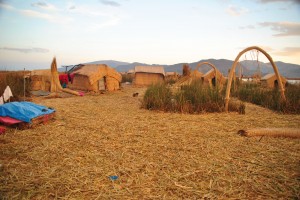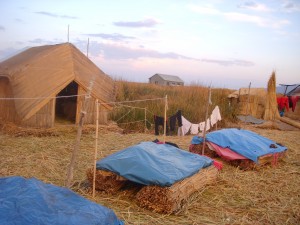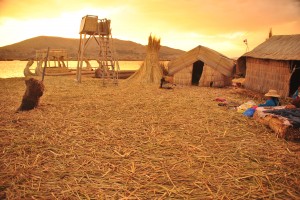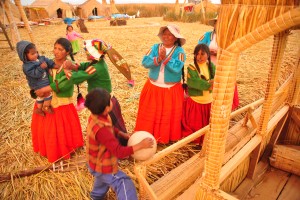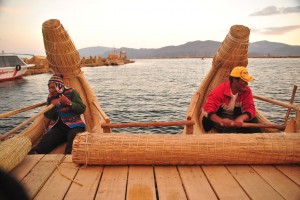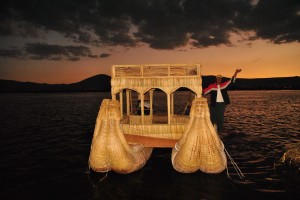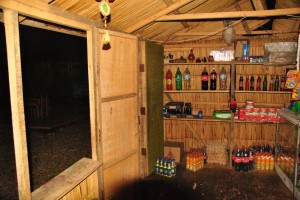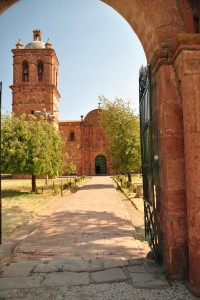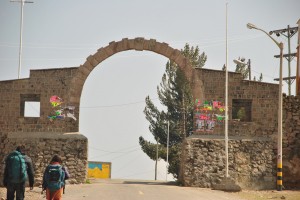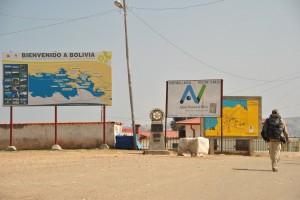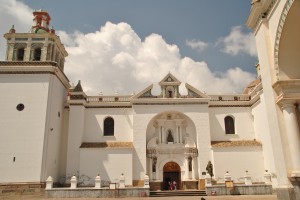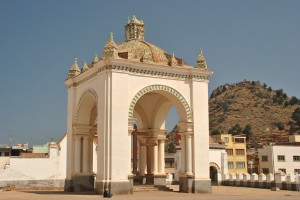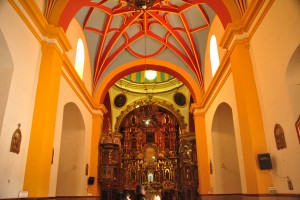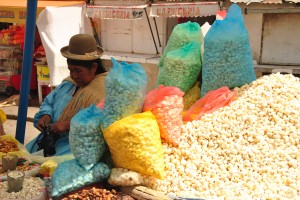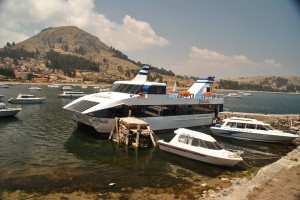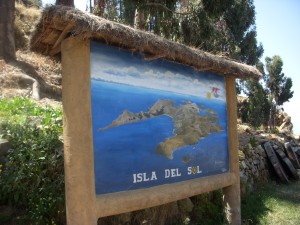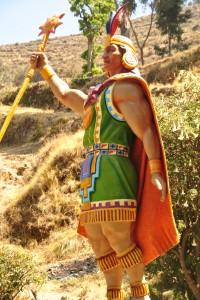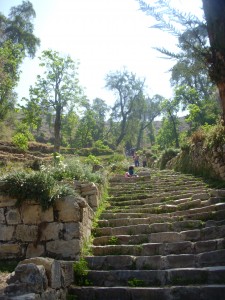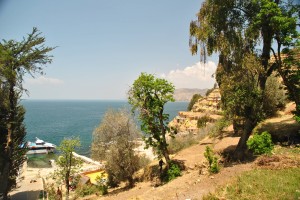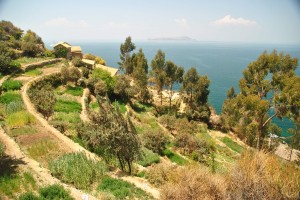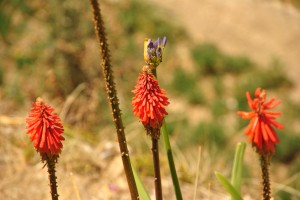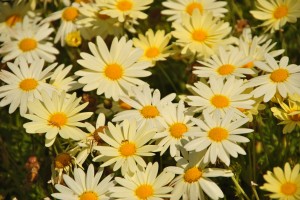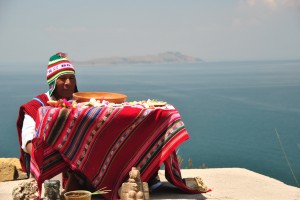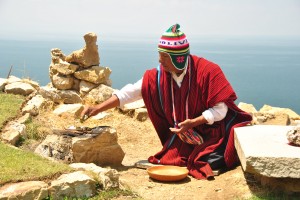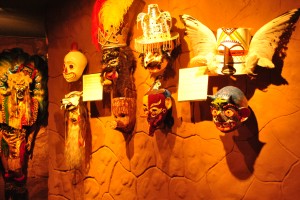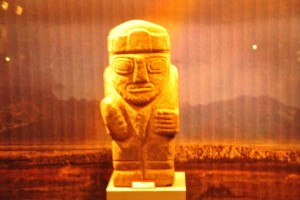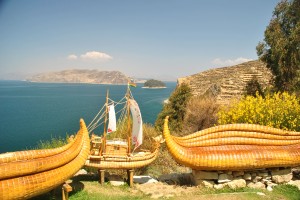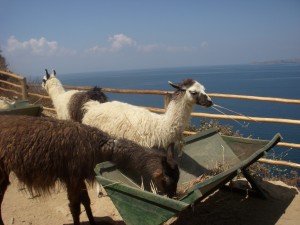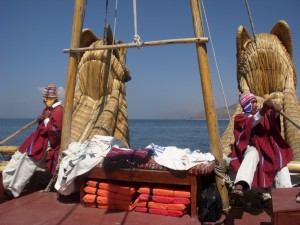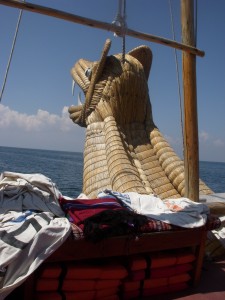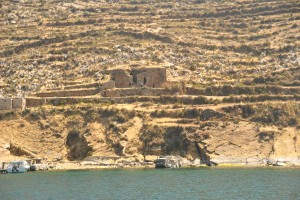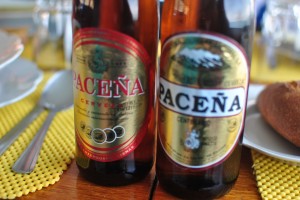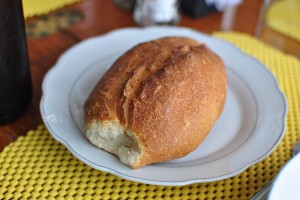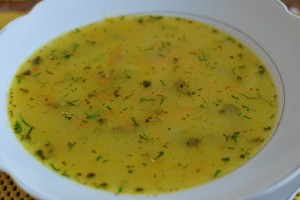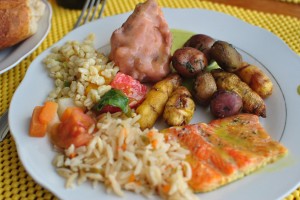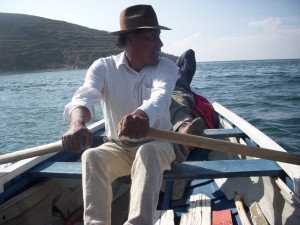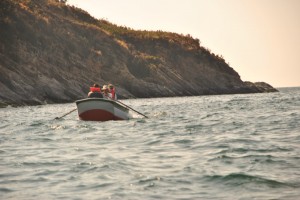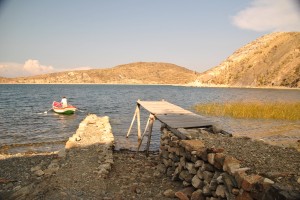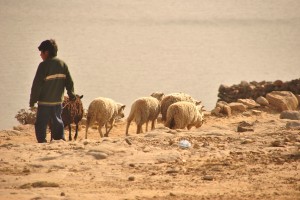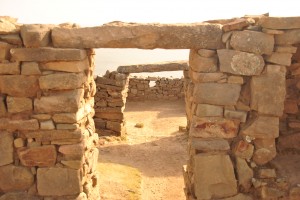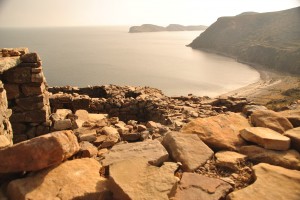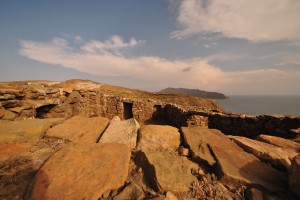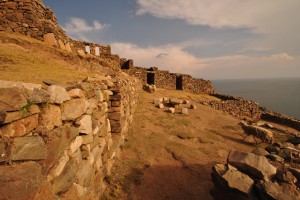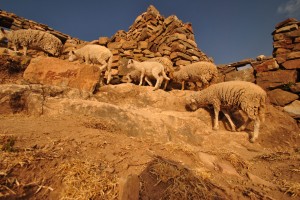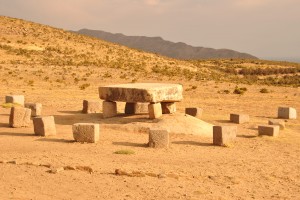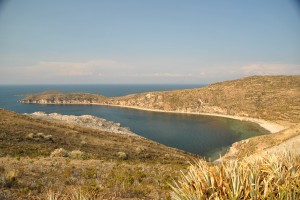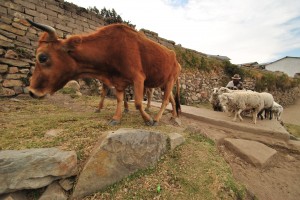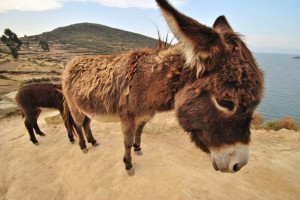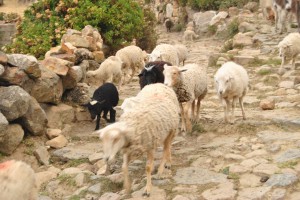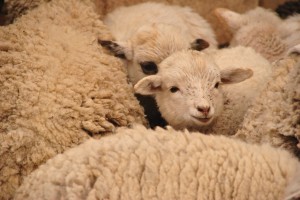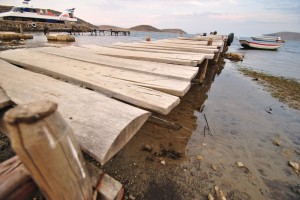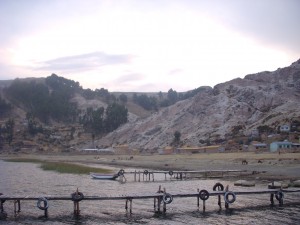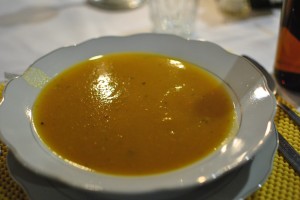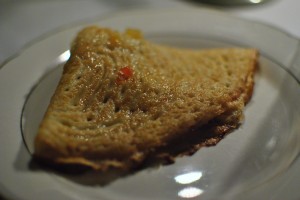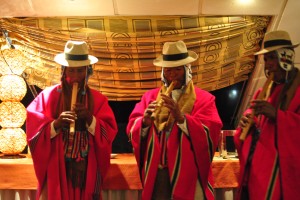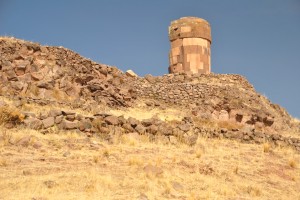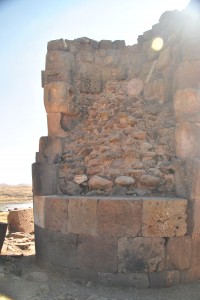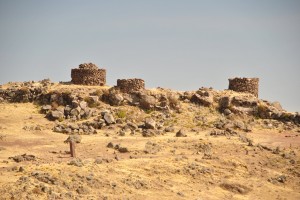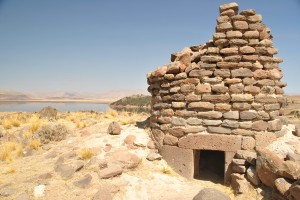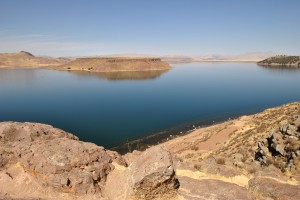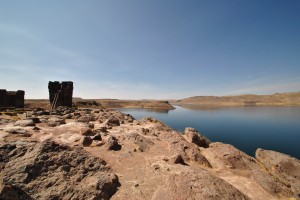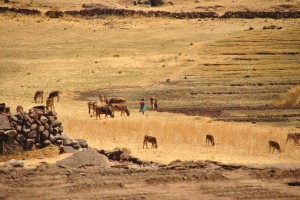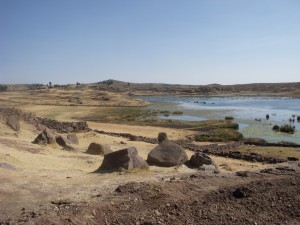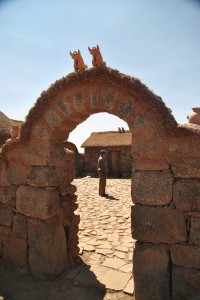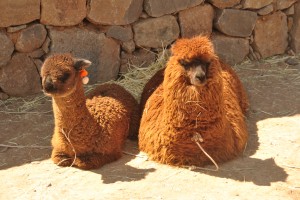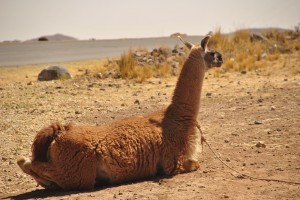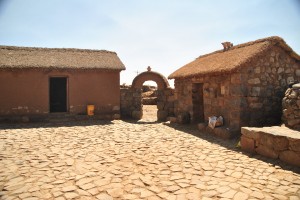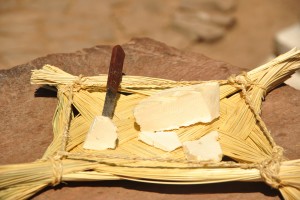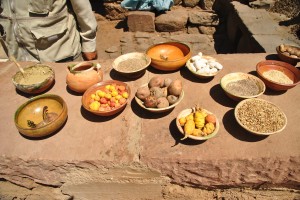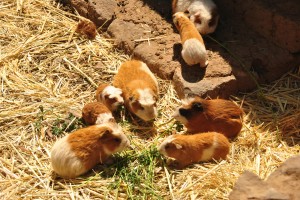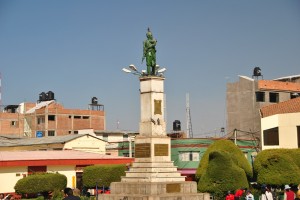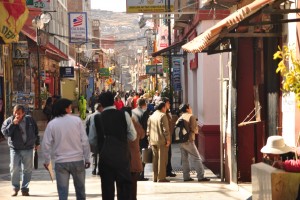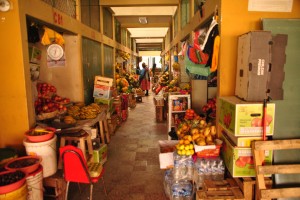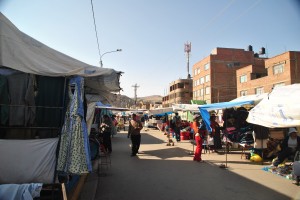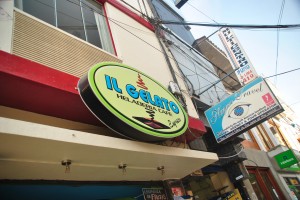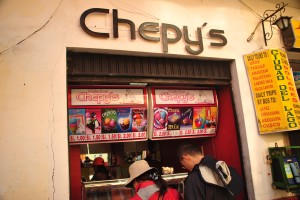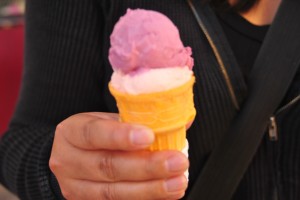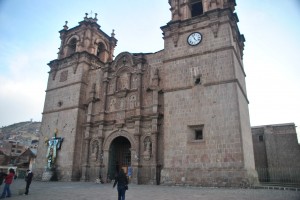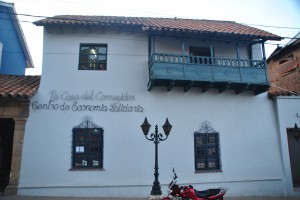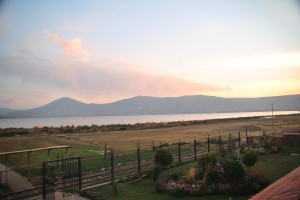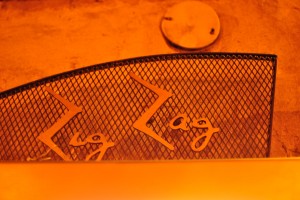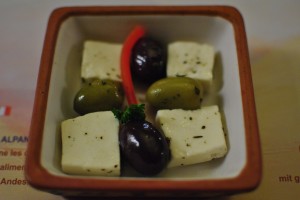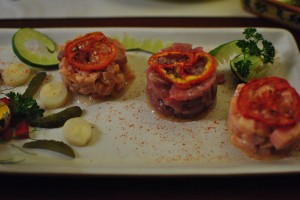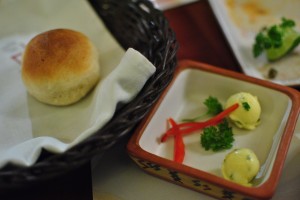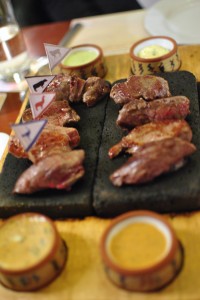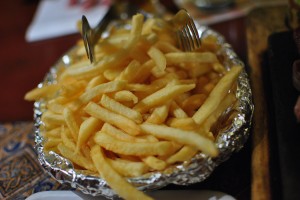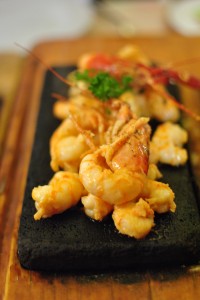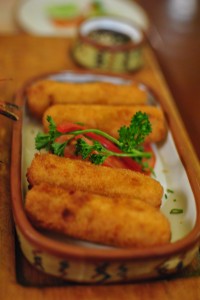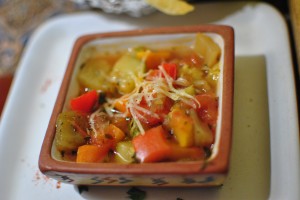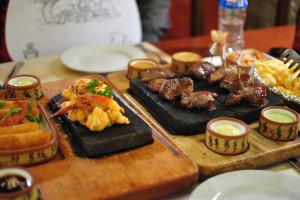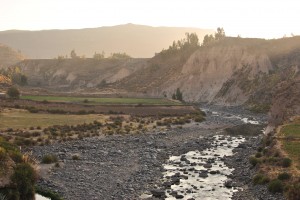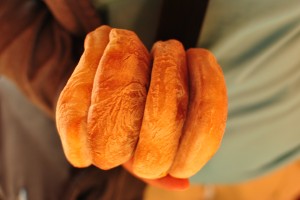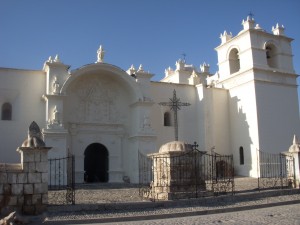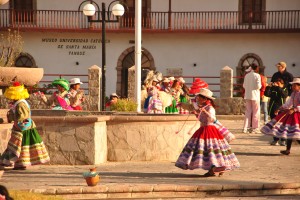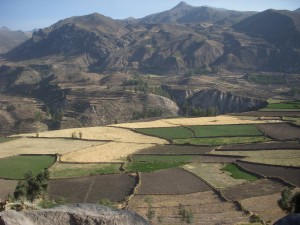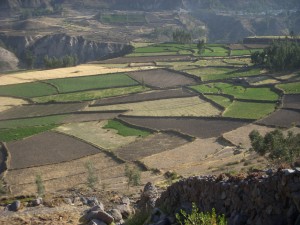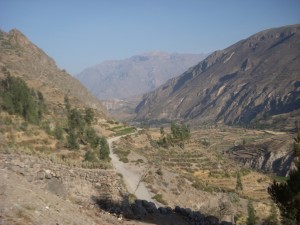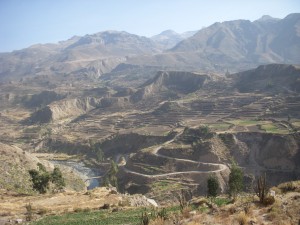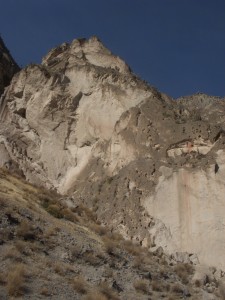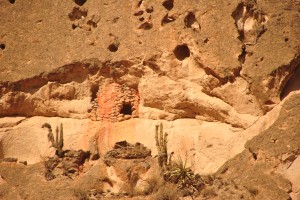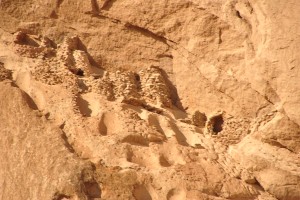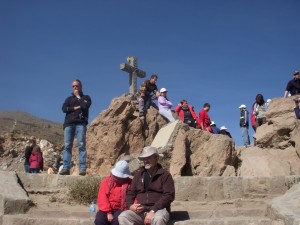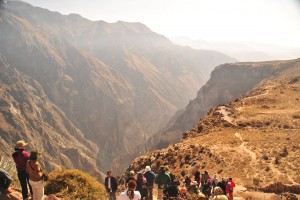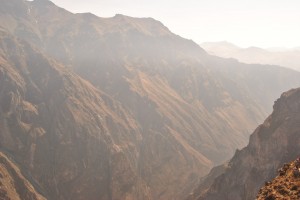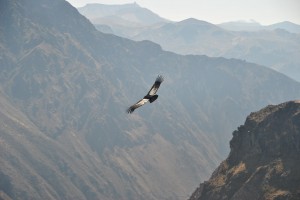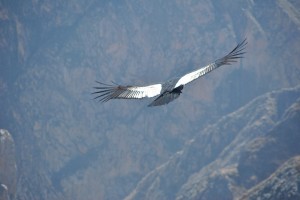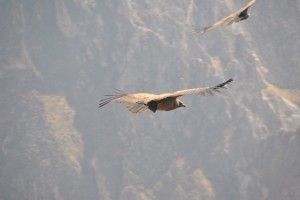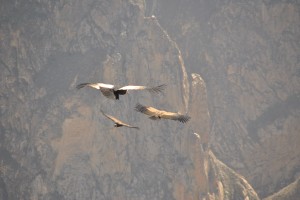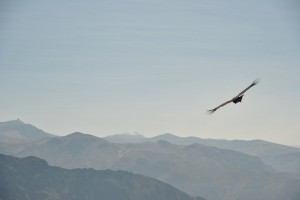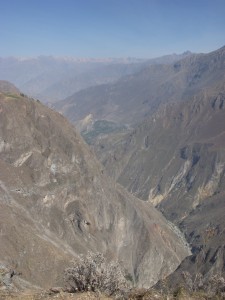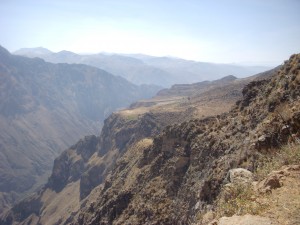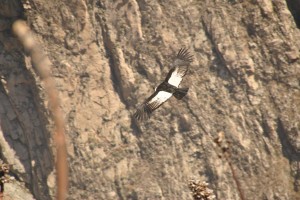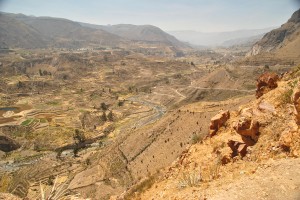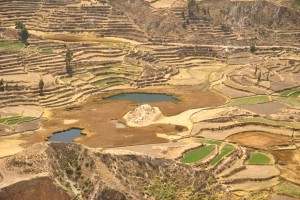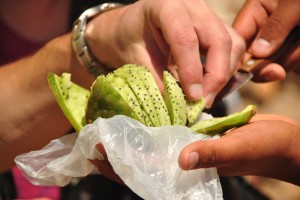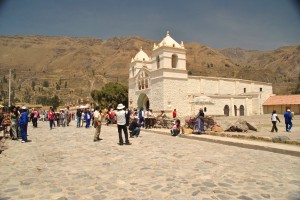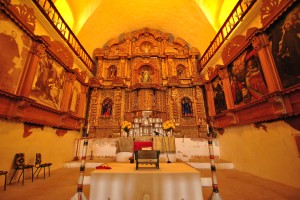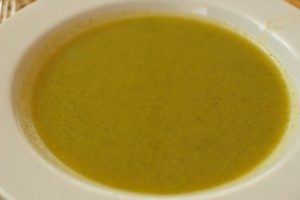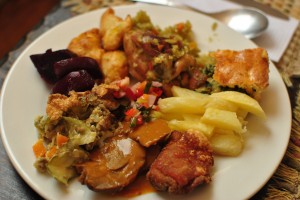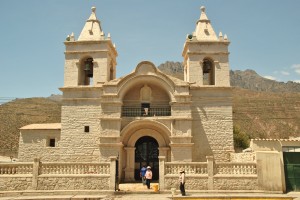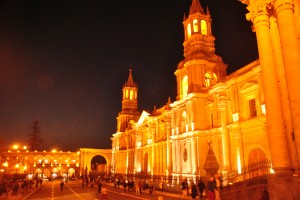The day that we had been waiting for finally arrived – we were heading to Machu Picchu! It was another early morning start since we had to drive about 45 minutes from our hotel in Urubamba to the train station in Ollantaytambo. Our driver picked us up at 6 am so I barely had time to grab some breakfast at the buffet, which opened at 5:30 am. It was so early that the eggs weren’t ready yet and I didn’t have time to wait around. Therefore, my only source of protein that morning was bacon. Not exactly nutritious, but I supplemented with some fruit and potatoes. Josh was running late, per usual, so I stashed some bananas in my backpack and grabbed a stack of bread for him to munch on in the car.
We arrived at the station and boarded the Vistadome train that would take us to Aguas Calientes, the town below Machu Picchu. The train had pretty comfortable seats and was much more reasonably priced than the Hiram Bingham train, so we were pretty happy about that. Josh and I were both assigned window seats on opposite sides of the train, which meant that we weren’t sitting next to one another so he ended up trading with another couple to take the seat next to me. It turned out to be a good decision because we ended up being on the “good” side of the train (the left side) that had the best scenery. The other side mostly faced the mountainside. The ride was about two hours and we just spent the whole time looking at the view outside the window.
We passed the start of the Inca Trail, where people hike for four days to Machu Picchu. While it was something that we thought would have been fun and interesting, we just didn’t have the time because we wanted to see so many other places in Peru.
While we were on the train, they fed us a snack consisting of a small sandwich, some fruit (assorted melon and kumquats), and some cookies. It was pretty tasty, especially since neither of us had a filling breakfast that morning.
While we snacked, we continued to watch the scenery go by. As we got closer to Aguas Calientes, we could feel everyone’s excitement building on the train.
We were really eager to just get straight on the bus and head to Machu Picchu but our tour didn’t start for another hour so we first walked the short distance to our hotel and dropped our bags off at the front desk. After freshening up and slathering ourselves with sunscreen and spraying ourselves with bug repellent (the mosquitoes are supposed to be vicious at Machu Picchu), we headed back to the train station to meet up with our group.
Another train arrived shortly afterward and I think it may have been the pricey Hiram Bingham train. There was much fanfare with their arrival, as a marching band started playing music and locals greeted the new arrivals with confetti and little trinkets. We watched in amusement as people got confetti sprinkled directly onto their heads.
After meeting up with the rest of our tour group for the day, we walked the short distance to the bus station and lined up. The wait wasn’t too bad and soon we were driving out of town and toward the mountains. I was so excited I could hardly contain myself, but as the bus started traversing the narrow switchbacks up the mountain, I started to get really nervous. When we looked out the window, we couldn’t even see the road on the side of the bus, just a long way down. I’m terrified of heights, and I had been worried that I would be too scared to enjoy the ruins at Machu Picchu. I tried to put those thoughts out of my mind and focused on the scenery instead, which was lovely green mountains peaks.
We were getting close to the top of the mountain and after we rounded one of the corners, we saw this:
It was pretty far in the distance so it looked tiny but we were super excited to catch our first glimpse. Then Josh informed me that the huge peak right next to it, which was astonishingly tall from our vantage point (and we were already really high up at this point), was Huayna Picchu. Ever since we booked our Peru trip, we had been debating the entire time whether we would climb Huayna Picchu. Josh was all for it but I had mixed emotions because of my fear of heights. I had heard conflicting reports as to how steep and scary the climb was. Some people said it was a breeze, while a few testimonials I had read online called it incredibly dangerous, and that if you slipped you would fall to certain death. Yikes! Not exactly what I wanted to hear, so I told Josh that I would decide when I actually saw it. These first view was not promising.
There was a bit of chaos after we arrived at the entrance to Machu Picchu. Since buses run continuously, there were a lot of people getting dropped off at almost the same time, and we had to find our group. We made a quick pit stop since there are no facilities inside the archaeological site. Then we regrouped and waited in line to go through the ticket booth. Once inside, we walked a short ways and our guide stopped to explain some of the history to us. We were near some Inca structures but were not in sight of the main portion of Machu Picchu, and the whole time he was talking I kept thinking, c’mon already! Lets go!
Finally, we were allowed to continue, walking down some stairs, around a corner, and then we saw this:
And this:
Basically, there was not a bad view anywhere we looked. Our guide walked us through the upper and lower sections of the site. We saw the temple of the sun and walked through some residential buildings. Most of it has been restored and is pretty immaculate, though that doesn’t take away from the sheer wonder of how the Incas managed to build this massive city on top of a huge mountain. There are lots of stairs involved but Machu Picchu was actually one of the lowest points on our trip at only about 2,500 meters above sea level (compared to Lake Titicaca, which was about 3,800) so we actually felt really good, stamina-wise. We covered a lot of ground and everything was just incredible, from how neat the stones all lined up to the angular trapezoid-shaped doorways and windows. I’m just going to let all the pictures speak for themselves. There are a lot of the iconic postcard view of Machu Picchu and Huayna Picchu, but from several different angles. Besides, we would never get tired of looking at that view.
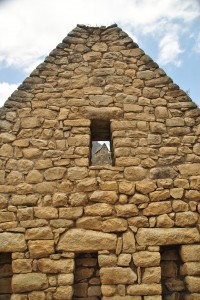
This is pretty neat... if you click on this picture to see the larger version, look through the window. It lines up perfectly with the guard tower at the top of the ruins. The Incas apparently were really big on windows lining up with things.
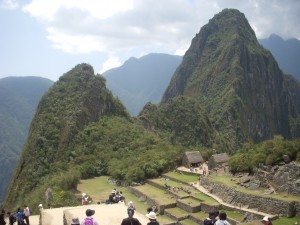
See the little houses at the right hand side of the picture? That's by the start of the trail for Huayna Picchu.
At the conclusion of the guided part of our tour, we walked out to get lunch at the Sanctuary Lodge, which was included as part of our package. It was nice to take a break and refuel because we had done a lot of walking, and it was pretty hot being outside the whole time. After lunch we re-entered the site (you need your passport and your ticket to do that) and decided to take the hike to the Sun Gate, which is along the Inca Trail. The people who hike the trail usually time their arrival at the Sun Gate to coincide with the sunrise, and it’s supposed to be pretty spectacular. To get to the gate from Machu Picchu, you climb up several levels of stairs until you’re at the top of the site, then there is a long path carved into the side of a mountain that leads up to the gate.
The trail to the Sun Gate was probably about six feet wide, which is not too narrow, but there were several parts where it was a sheer drop off to one side. I was more terrified than I thought I would be and walked practically clinging to the mountain as we went along. My knees were shaking, which only made things worse because I felt unsteady on my feet. The only thing that kept me going was the view, which was of course spectacular.

Looking back at Machu Picchu growing smaller in the distance. From this viewpoint you can see just how much taller and steeper Huayna Picchu is in comparison.
We were pretty sweaty and gross by the time we reached the top so we rested for a bit before making our way back. Machu Picchu was small in the distance but still pretty impressive. We also had a good vantage point to see the switchbacks that the buses drive to get to and from Machu Picchu. They looked even more narrow and scarier from up high.
Unfortunately, we had to go back the same way, which meant I had to walk along the narrow path once again. Surprisingly, it was harder the second time around. I actually had to stop a few times and give myself a quick pep talk to keep going. I think I was just tired at this point, and we were kind of rushing to make sure we didn’t miss the last bus back to Aguas Calientes, so the combination of all the factors made me feel even more nervous and shaky.
We had a little time to spare so we walked up to the guard tower, which gave us yet another nice view of Machu Picchu.
We also ran into a group of llamas on one of the terraces. They basically wander around the ruins as they please.
Afterward, we made our way back to the entrance to wait for the next bus. At this point I resigned myself to the fact that I had to climb Huayna Picchu. I kept staring at that peak all day long and psyching myself into and out of doing it. But I knew deep down that if I didn’t at least try, I would regret it. So we bought bus tickets for the next day, and when we got back to town we headed straight for the building where they sell entrance tickets to Machu Picchu (our tour package didn’t include tickets for the next day). On the bus ride down the mountain, we inhaled the now slightly smashed bananas that I had stashed in my backpack from breakfast (see top of post). I have to say, they were just what we needed.
Back in town we took a quick stroll through the main square in Aguas Calientes. As expected, there was a church.
Later that night, there was a rally in the square for the upcoming elections. There was a band and lots of balloons, and people were really getting into it.
Unfortunately, the rally lasted well into the night. Our hotel was very close to the square so we heard all the speeches and fireworks that were going off. It was a bit annoying because we had gone to bed right after dinner at the Inka Wasi knowing that we needed to wake before dawn to catch one of the first buses up to Machu Picchu, since only 400 people are allowed to climb Huayna Picchu per day. The rallies I think ended around 2:30 am, and we had to get up at 3:30 am. So that, on top of my anxiety about climbing Huayna Picchu, did not make for a good night’s sleep. Regardless, I was pretty happy with how our day was, and Machu Picchu itself was even more impressive than I thought it would be. Hope you enjoyed all the photos!
